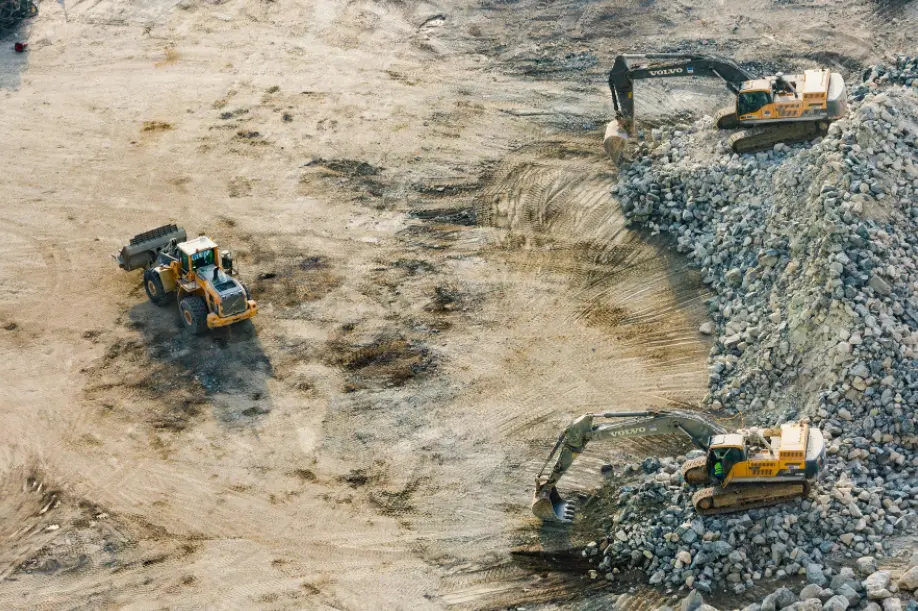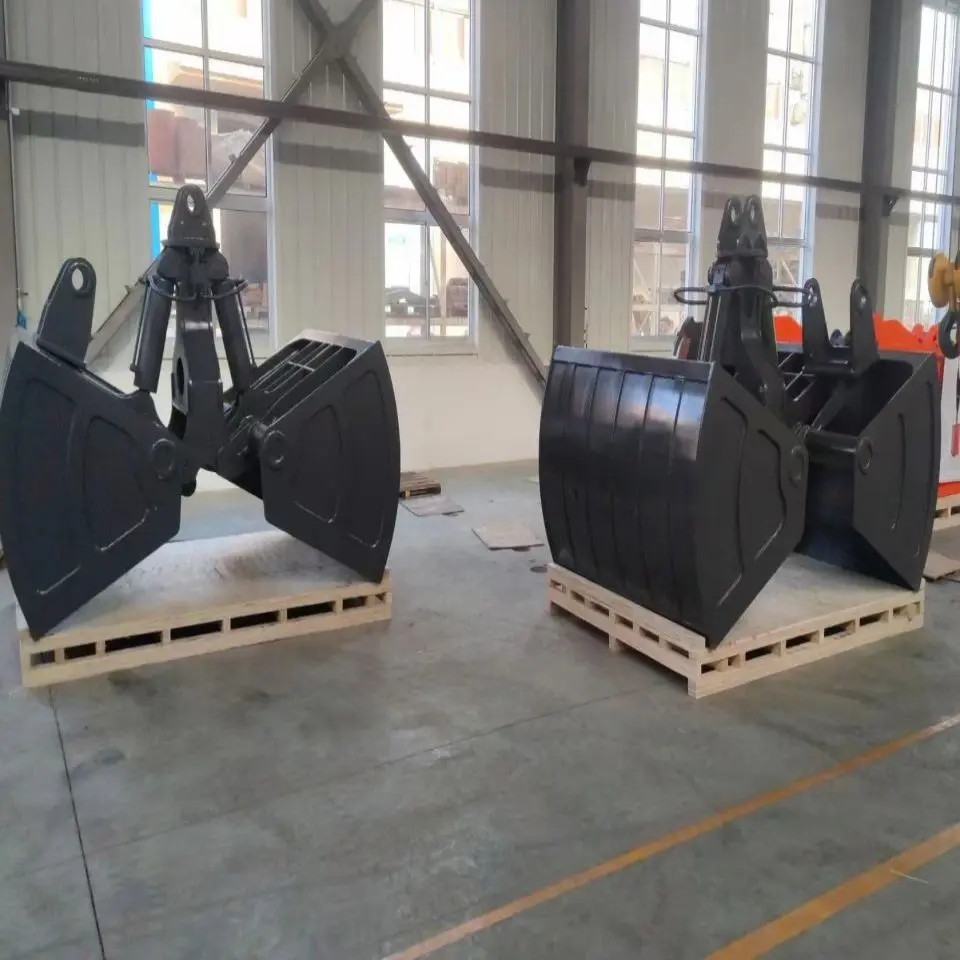Top Digger Bucket Varieties for Rock and Soil Challenges
Excavators are the backbone of construction and mining, and their buckets determine how efficiently they tackle tough rock and soil tasks. Choosing the right bucket can make or break your project’s timeline and budget. Guangdong Kingho Technology Co., Ltd., a leader in excavator attachments, offers specialized buckets designed for durability and performance. With over a decade of expertise and certifications like ISO9001 and CE, Kingho delivers reliable solutions for demanding environments. This guide explores their Earth Bucket, Shell Bucket, and Clamp Bucket to help you select the perfect fit for rock and soil challenges.

Why Is the Earth Bucket Ideal for Heavy-Duty Digging?
The Earth Bucket from Kingho is built to handle tough soil and rock excavation, making it a go-to for rugged job sites. Its robust design ensures long-lasting performance under high stress. Picture a highway project where you’re ripping through layered gravel and hardpan— this bucket keeps things moving without constant swaps.
High-Strength Steel Construction
Crafted with high-strength steel plates, the Earth Bucket resists wear and tear, ensuring reliability during intense digging tasks. We’re talking plates that hold up against the grind of daily hauls, maybe 500 tons of dirt a shift. No more mid-morning breakdowns that leave your dozer idling.
Enhanced Durability Features
Specialized casting guard plates and blocks, combined with advanced processing, boost the bucket’s lifespan and efficiency. These aren’t just add-ons; they protect the edges where most buckets fail first. In one quarry I visited last year, a similar setup lasted two seasons straight, cutting replacement costs by a good 40%.
Customizable Design Options
Kingho offers tailored configurations to match specific excavator models, ensuring seamless integration and optimal performance. Need a wider mouth for bigger loads? They tweak it on the fly. It’s handy for those oddball machines that don’t fit off-the-shelf stuff.
What Makes the Shell Bucket Perfect for Bulk Material Handling?
Kingho’s Shell Bucket excels at loading and unloading loose, sandy materials, offering precision and strength for bulk operations in construction or recycling. Think recycling yards piled high with scrap— this thing scoops it clean without spilling half back out. Smooth sailing, even on uneven ground.
NM500 Wear-Resistant Steel
Made with NM500 steel, the Shell Bucket withstands abrasion, ensuring durability when handling broken or sandy materials. That steel’s tough as nails; I’ve watched it shrug off rocks that would shred lesser metal. For a 20-ton hauler, it’s like having armor on your scoop.
Double-Cylinder Efficiency
Its dual-cylinder connecting rod design provides flexible operation and a short working cycle for faster task completion. Cylinders fire quick—under 5 seconds per grab—and that adds up over a 10-hour day. Crews notice the difference; less arm strain on the operator, too.
Wide Model Range
Available in models like JSCS1200 to JSCS2500, it suits excavators from 12 to 45 tons, with openings up to 2380 mm for large-scale jobs. The JSCS2000R, say, weighs in at 2500 kg and handles 240 L/min flow. Perfect for port ops where you’re flipping sand dunes into trucks non-stop.
How Does the Clamp Bucket Improve Versatility in Excavation?
The Clamp Bucket from Kingho combines digging and clamping, making it ideal for varied tasks like gravel site excavation or material handling. On a riverbank job, you might dig one minute, clamp logs the next—no tool changes needed. Versatility like that saves headaches.
Q345 Manganese Steel Build
Using corrosion-resistant Q345 manganese steel, this bucket ensures strength and longevity in tough conditions. Manganese fights rust like a champ, especially in wet soil sites. A buddy’s team ran one through monsoon season; barely a scratch after six months.
Swiss Rotary Motor
The rotary type features a Swiss-imported motor, enabling precise movements and efficient operation across tasks. That motor spins 360 degrees without a hitch, letting you angle just right for awkward loads. It’s the little things that keep the rhythm going.
Broad Size Compatibility
With models like JSCB20 to JSCB300R, it fits excavators from 2 to 40 tons, offering flexibility for small and large projects. Take the JSCB150R—950 kg, 1550 mm opening, good for 12-18 ton machines. Small enough for tight urban digs, beefy for rural hauls.
Why Does Material Choice Matter for Bucket Performance?
The right materials ensure buckets withstand harsh conditions while maintaining efficiency, directly impacting project success and maintenance costs. Skimp here, and you’re back to the shop every other week. Kingho gets it right, drawing from years in the muck.
Wear-Resistant Alloys
Kingho uses NM500 and Q345 steels, which resist abrasion and corrosion, extending bucket life in rocky or sandy environments. NM500, for instance, handles 3-4 times the wear of standard stuff. In mining ops, that means fewer swaps, more uptime—maybe 200 extra hours a year.
High-Toughness Pins
42CrMo alloy steel pins with built-in oil passages provide strength and durability, reducing wear during heavy use. These pins take a beating; heat-treated for toughness, they don’t snap under 10-ton loads. Once saw a knockoff bend like taffy—lesson learned.
Imported Seals and Motors
HALLITE oil seals and Swiss motors ensure smooth operation and minimal downtime, even under continuous stress. Seals last 5,000 cycles easy, motors hum without overheating. It’s not flashy, but it keeps your excavator purring when others falter.
Oh, and speaking of motors, I once chased a wild goose on a hybrid electric model—turns out, hydraulics still rule for raw power. Back to basics.
How Can Bucket Design Enhance Operational Efficiency?
Thoughtful design features, like cylinder systems and rotation mechanisms, can significantly boost a bucket’s productivity on the job site. Good design isn’t about bells; it’s about flow. Kingho nails that with practical tweaks from field feedback.
Modular Configurations
Kingho’s buckets, like the Earth Bucket, allow quick customization, reducing setup time and improving workflow. Bolt-on guards or widened lips—done in under an hour. For a bridge build last summer, that mod shaved two days off the schedule.
Optimized Cylinder Systems
Dual-cylinder designs in the Shell and Clamp Buckets ensure faster cycles and precise control for efficient material handling. Pressure at 250 bar means snappy grabs, no lag. Operators say it feels like the machine reads their mind.
360-Degree Rotation
Swiss-imported rotary motors in the Clamp and Shell Buckets enable full rotation, enhancing flexibility in tight spaces. Swing a full load without repositioning the whole rig. In urban demos, that’s gold—dodging rebar and foot traffic like a pro.

How Do Kingho Buckets Ensure Long-Term Reliability?
Durability and low maintenance are key to keeping projects on track, and Kingho’s buckets are engineered for consistent performance. Founded in 2009, they’ve scaled from breakers to full attachments, hitting milestones like 600-unit sales by 2010. That’s grit.
Advanced Manufacturing Standards
ISO9001 and CE certifications ensure Kingho’s buckets meet global quality benchmarks, reducing failure risks. Their 57,000 sqm factory in 2016? Pumped out shears that shipped worldwide. No corners cut—pins quenched just so.
Low-Maintenance Designs
Features like imported HALLITE seals and robust steel minimize upkeep, saving time and costs over the bucket’s lifespan. Wipe it down weekly, and you’re good for years. A client in ports reported zero seal leaks after 18 months—rare, but telling.
FAQ
Q1: What tonnage excavator works best with Kingho’s Earth Bucket?
A: Most models pair with 10-30 ton machines, but check your flow rate—aim for 150 L/min to keep it humming.
Q2: How often do I need to service a Shell Bucket?
A: Quick checks every 200 hours; seals hold up well, but grease those pins monthly to avoid grit buildup.
Q3: Can Clamp Buckets handle wet soil jobs?
A: Absolutely, thanks to the manganese steel. Just watch for overloads in muck—stick under 80% capacity for safety.

